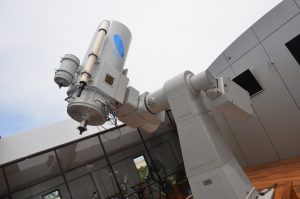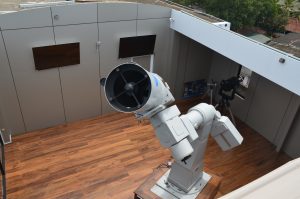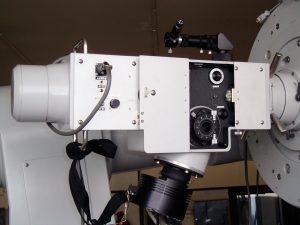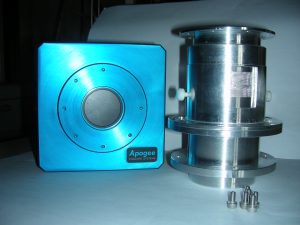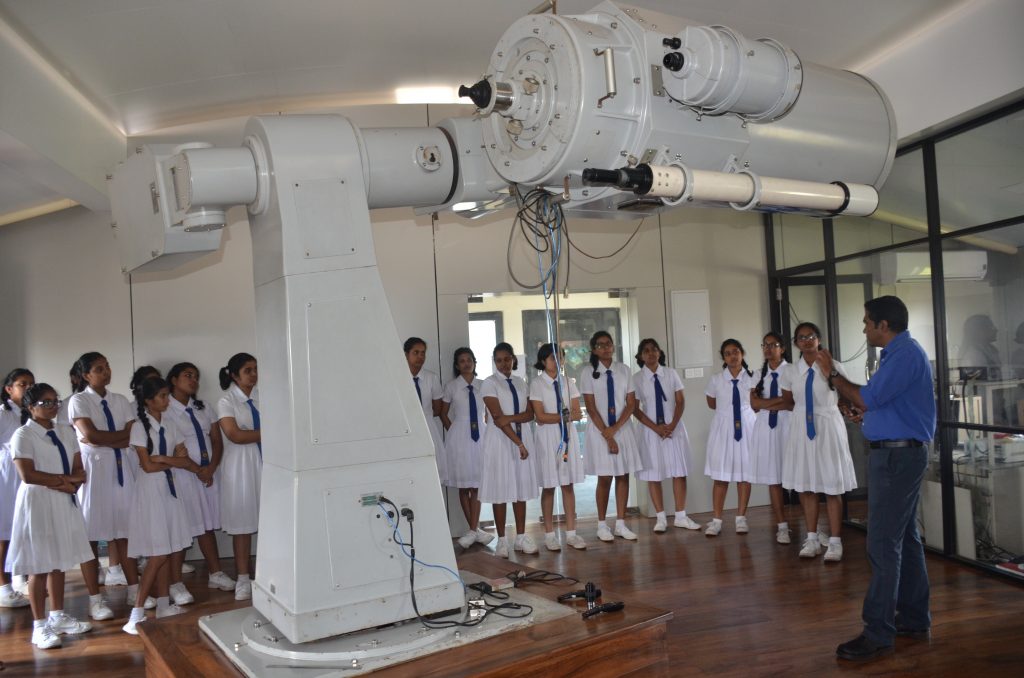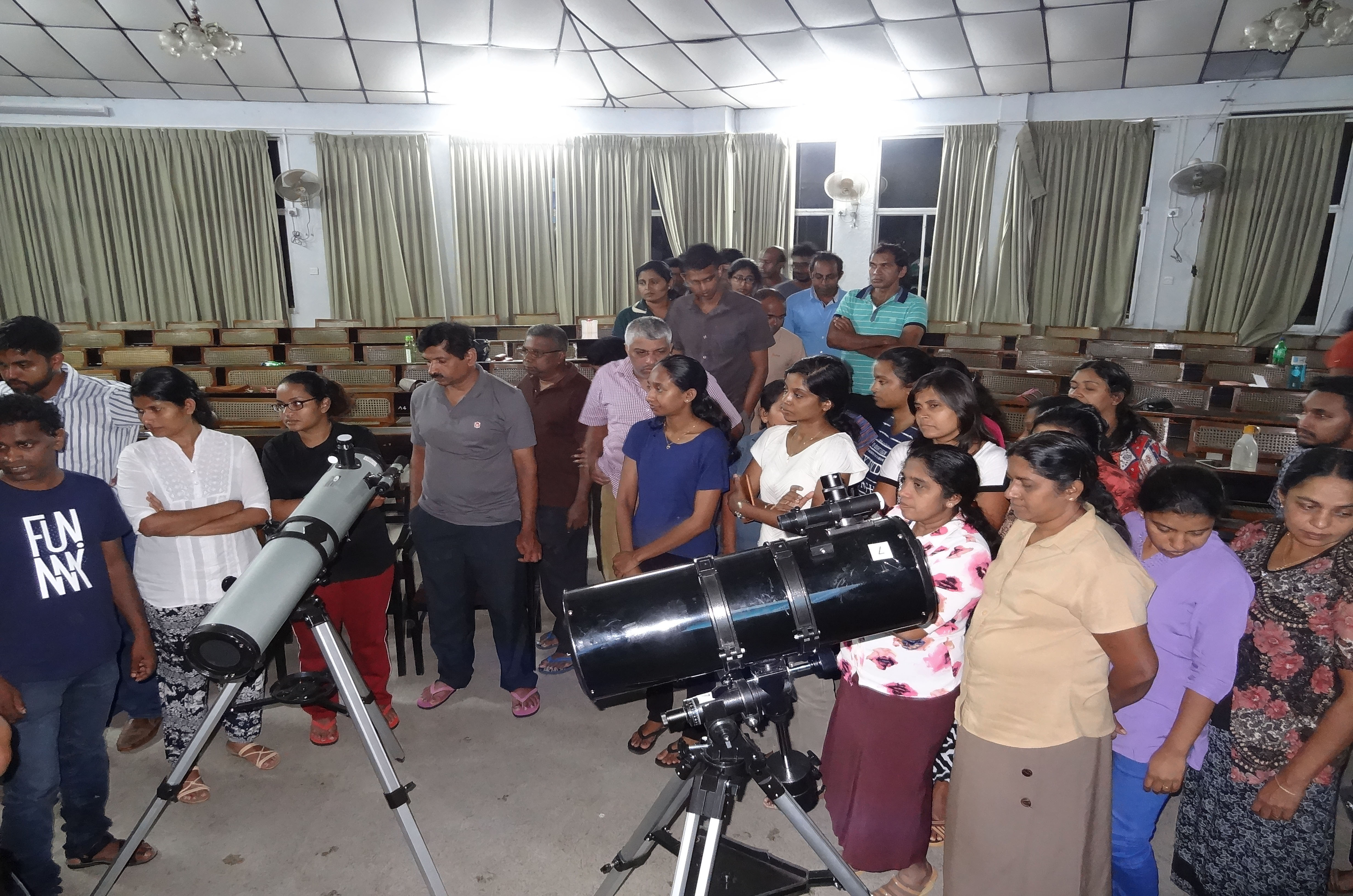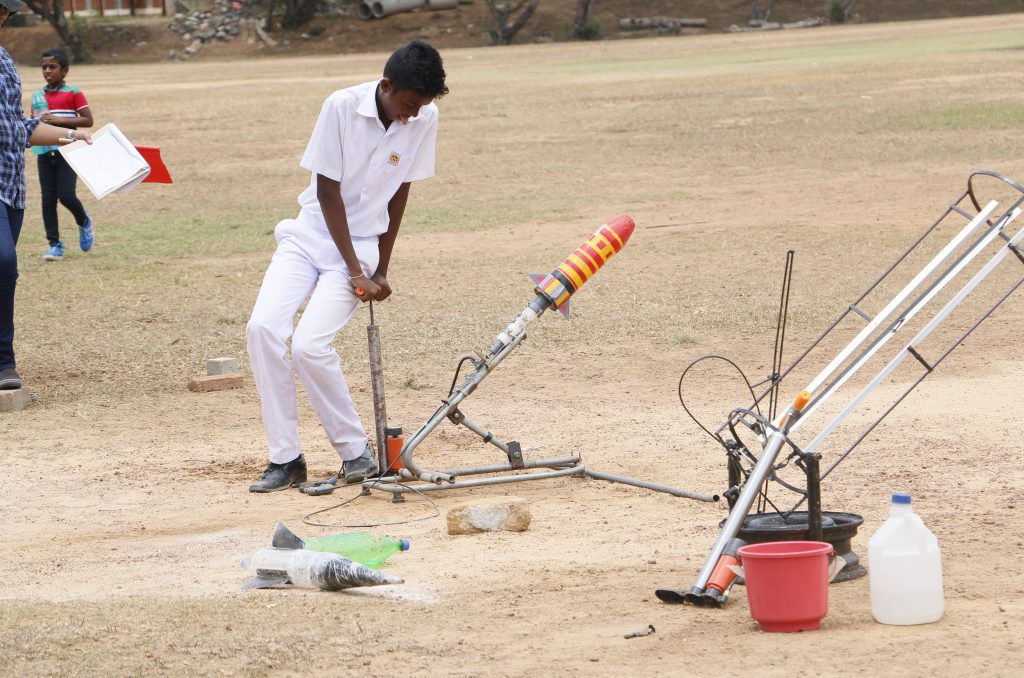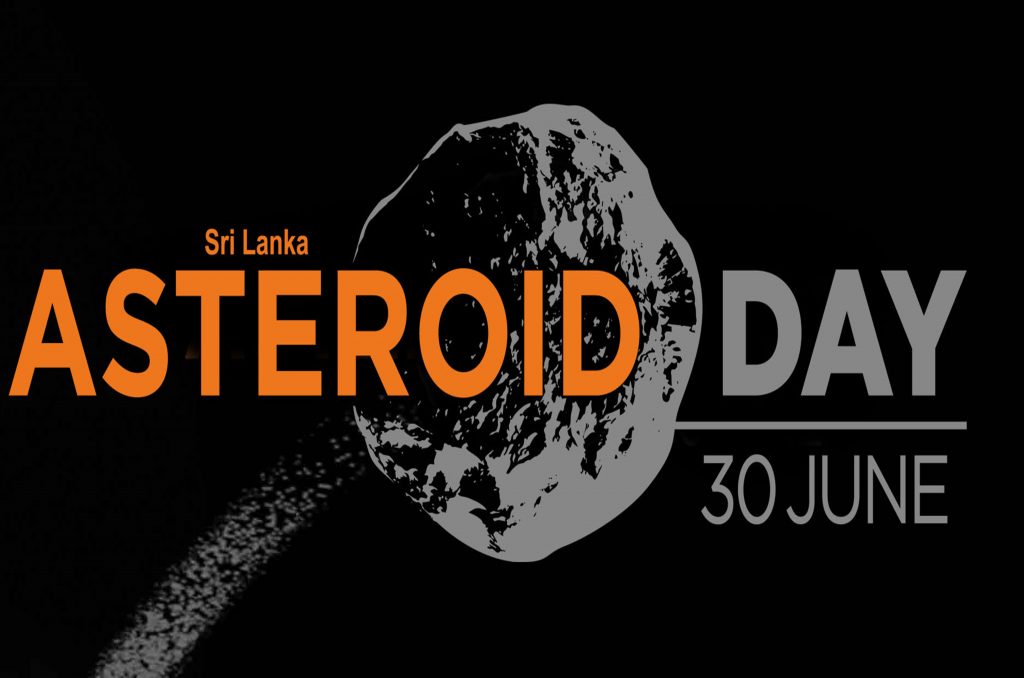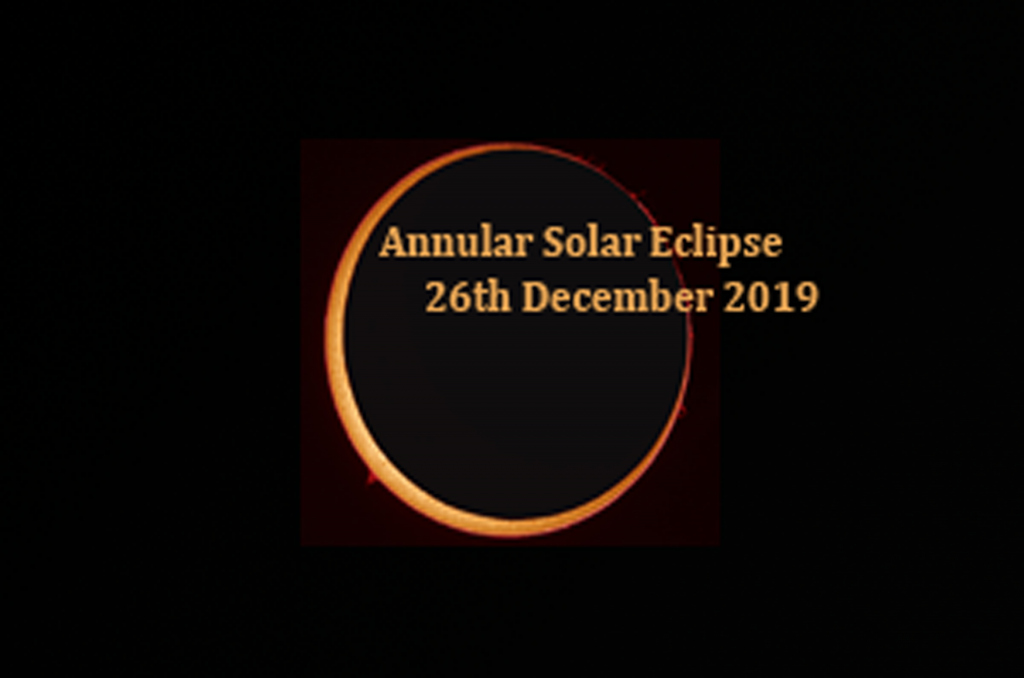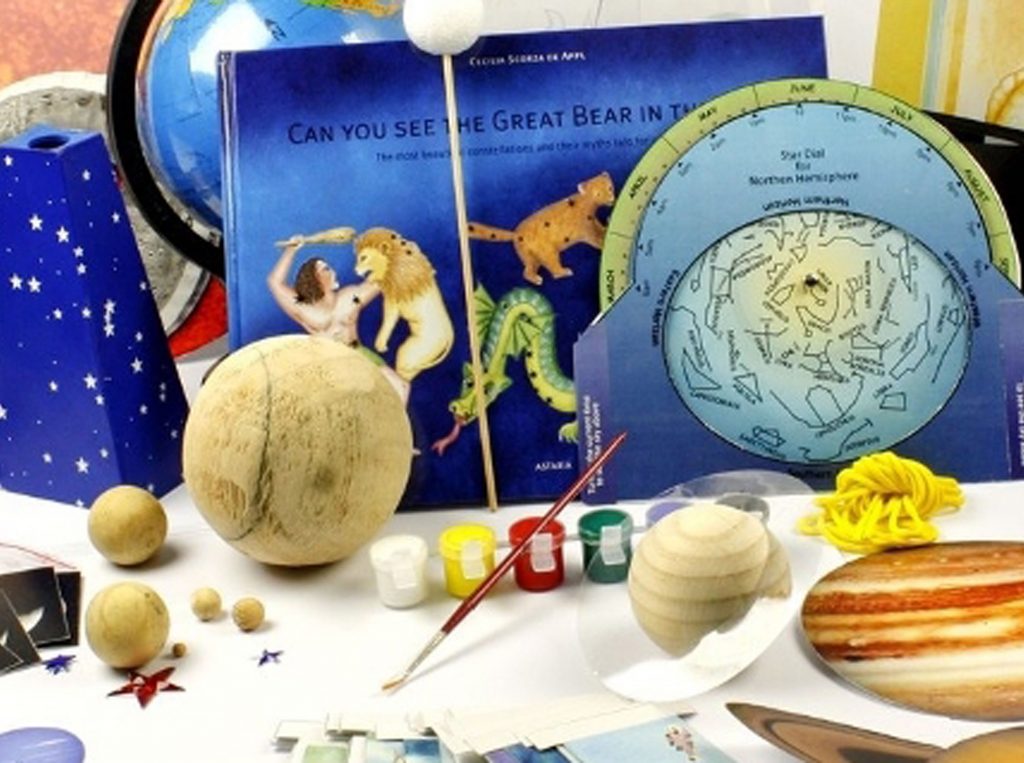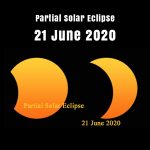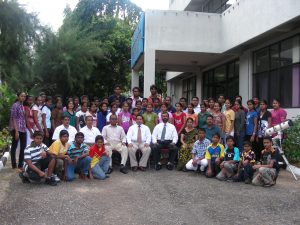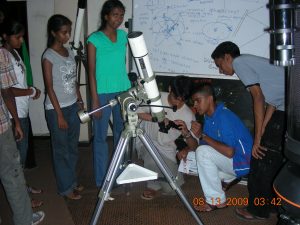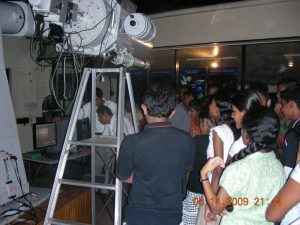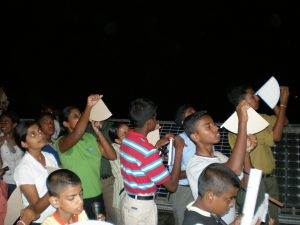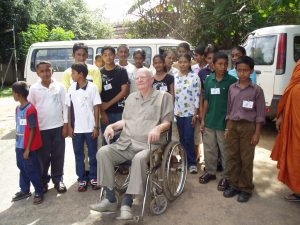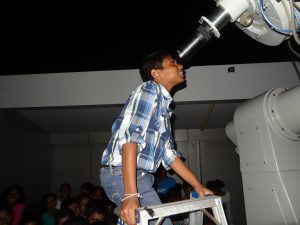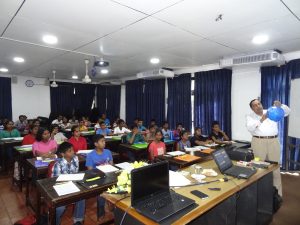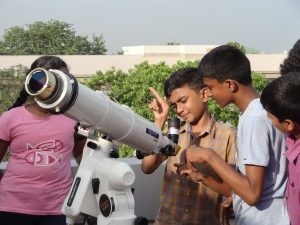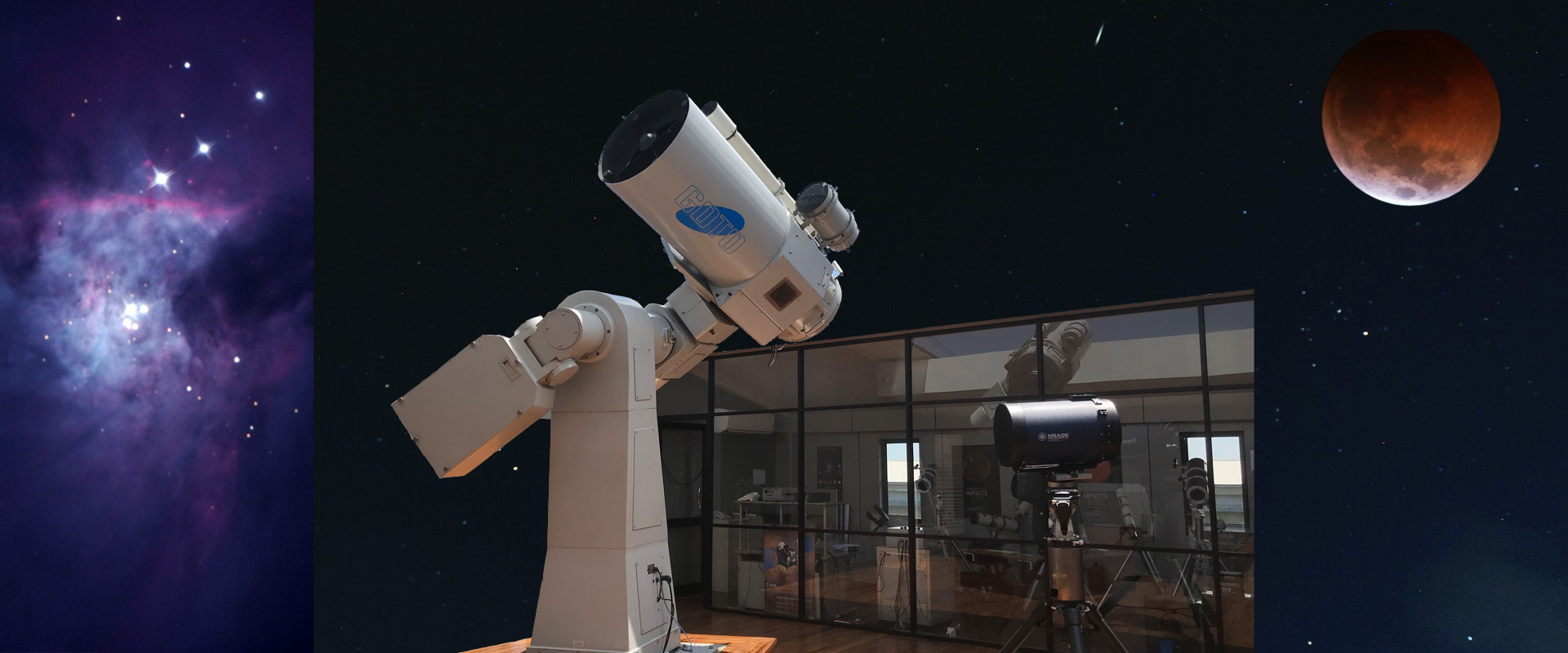
Astronomy division was established in ACCIMT with the commencement of largest optical telescope facility in Sri Lanka, GOTO 45cm Cassegrain telescope. The division is responsible in the operation of telescope facility and carryout observations and education programs. Astronomers in the division are working in close collaboration with foreign entities and local universities to carry out basic research in astronomy. In addition, outreach programs for astronomy and space science popularization are also conducting for public and school children.
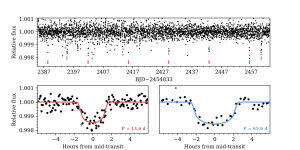
Detecting Exoplanets
Exoplanetary Astronomy is the study of planetary systems around stars other than our sun. At ACCIMT, we have used the data released from the Kepler spacecraft to find new exoplanets, and at present we have had success in detecting two new planetary systems.
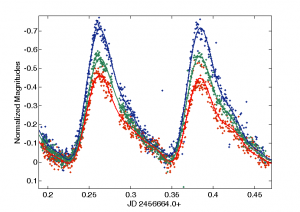
Asteroseismology
Asteroseismology allows an unprecedented way to determine the internal structure of stars by studying their oscillations. This method can be applied to all types of pulsating stars which have radial and non-radial pulsations. In radial pulsations, star expands and contract radially while in non-radial, for example, the northern hemisphere contacts and southern hemisphere expands.

Evolution and physical properties of Cataclysmic Variable Stars
Cataclysmic variables (CVs) are interacting binary stars comprising a white dwarf accreting matter from either a main-sequence or slightly evolved star, or from a red dwarf. This interaction resulted range of behavior, of which the most significant are outbursts that give the class its name such as supernovae, novae, recurrent novae, dwarf novae, symbiotic stars and R Corona Borealis.
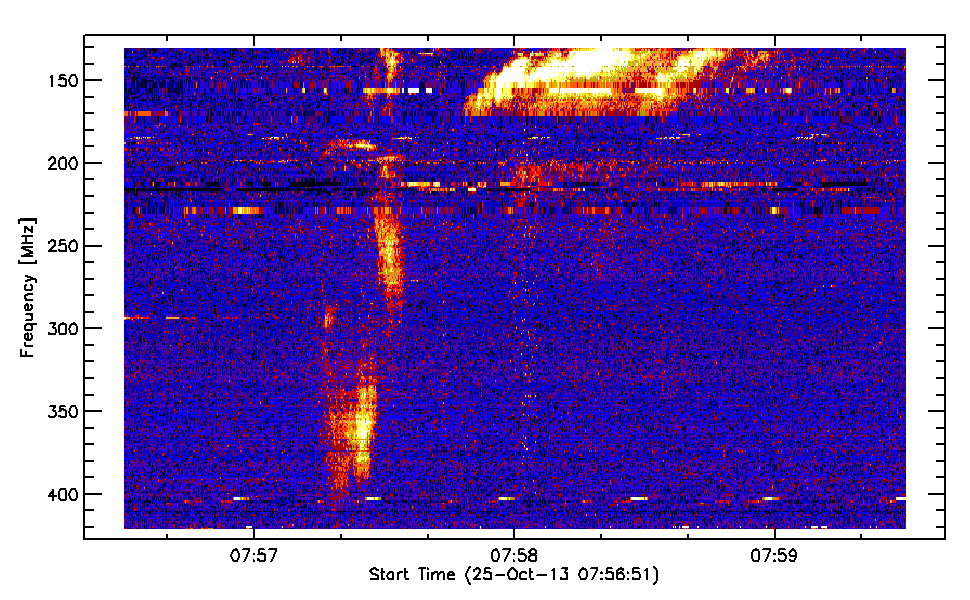
Solar Radio Bursts
Solar flares and Corona Mass Ejections (CMEs) are energetic events in the active sun. The radiation and high energy particles are emitted by these events. The radio emission of these energetic events can be identified as solar radio bursts. These radio bursts can be detected by the CALLISTO system at ACCIMT. The data is available to investigate these energetic events which mostly unknown the physical processes behind.
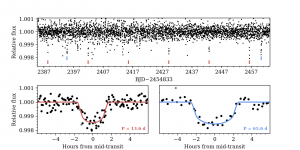

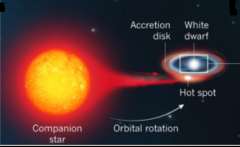
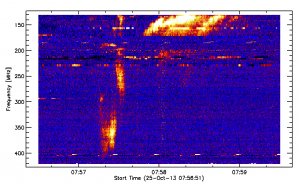
Detecting Exo-planets
Exoplanetary Astronomy is the study of planetary systems around stars other than our sun.
Asteroseismology
Asteroseismology; the only way of determining the internal structure of stars by studying their oscillations.
Cataclysmic Variables
Cataclysmic variables are interacting binary stars comprising a white dwarf accreting matter from a companion star.
Solar Radio Bursts
The radio emissions of solar flares detect by CALLISTO system at ACCIMT.
Sri Lankan largest telescope
In 1996, ACCIMT hosted the UN/ESA workshop on Basic Space Science which resulted the commissioning of the GOTO 45cm Cassagrain telescope donated by the Japanese Government. This is the largest optical telescope facility available in Sri Lanka which is meant for carrying out basic research studies in astronomy as well as for teaching astronomy to school and university students.
This telescope facility is equipped with a spectrograph, photometer and Apogee ASPEN (3056×3056 pixels) and Apogee ALTA U47 (1024×1024 pixels) CCD cameras. The spectra in the wavelength region from 4000 A to 9000 A can be obtained with this system. The photometer of the telescope has RCA IP21 photomultiplier tube with pulse counting system and Johnson and Morgan UBVRI filters.
Specifications of Telescope
| Effective Aperture | 45 cm |
| Effective Focal Length | 5400 mm |
| F Number | f/12 |
| Theoretical Resolving Power | 0.31 arcseconds |
| Maximum Visual Magnitude | 15 (perfect clear sky) |
The astronomy division introduces this workshop under the astronomy infrastructure development programme. This workshop consists of both the theory and practical components and will be held at the ACCIMT. Participants will have the opportunity to use the biggest telescope in Sri Lanka to complete part of the practical component.
The workshop is more suitable for students and school leavers interested in astronomy in the age group of 14 – 20 years.
Main Topics of Study
Astronomy: History of Astronomy, Celestial Sphere, Solar System, Star Evolution, Binary & Variable Stars, Extra-solar Planets, Telescopes & Modern Tools in Astronomy, Introduction to Spectroscopy & Photometry.
Space Science & Technology: Theory of Rockets, Function of Advance Instruments in Astronomy, Space Technology Applications.
Hand on Experience: Observations through Modern Telescopes (including Sri Lankan largest telescope), Spectroscopy, Solar Observations and use of H alpha solar filters, Construction of Astronomical Tools, Sky Mapping, Launching Water Rocket and Construction of Simple Refractor Telescopes etc.
Journal Publications
- J. Adassuriya, J. A. N. S. S. Jayasinghe, K. P. S. C. Jayaratne, Identifying Variable Stars from Kepler Data Using Machine Learning, European Journal of Applied Physics, 2021
- J. Adassuriya, S. Ganesh, Gutierrez J. L., Handler G., Joshi Santosh, Jayaratne K. P. S. C., Baliyan K. S., Asteroseismology of sz lyn using multi-band high time resolution photometry from ground and space, MNRAS, 2021
- J Adassuriya, KPSC Jayaratne, PTLV Cooray, MLC Attygalle, Determination of oscillation frequencies and stellar properties of three Delta Scuti variable stars using Kepler data, Journal of the National Science Foundation of Sri Lanka, 2020
- Herath Mahesh, Gunesekera Saraj, Jayaratne Chandana, Characterizing the possible interior structures of the nearby Exoplanets Proxima Centauri b and Ross-128 b, MNRAS, Volume 500, Issue 1, 2020
- Dai Zhibin, Szkody Paula, Thorstensen John R., Medagangoda N Indika, Follow-up Ground-based Observations of the Dwarf Nova KZ Gem, The Astrophysical Journal, Volume 893, Issue 1, 2020
- Mahesh Herath, Saraj Gunasekera et al., Two temperate sub-Neptunes transiting the star EPIC 212737443, MNRAS, Vol 488, Issue 1, 2019
- J. A. D. M. Dharmathilaka, I. Medagangoda, L. M. M. De Silva , G. M. L. P. Aponsu, N. R. A. M. Ruwangika, Outbursts Analysis of Dwarf Novae Subtypes, International Journal of Advanced Research in Science, Engineering and Technology (2019)
- J. Adassuriya, K.P.S. Chandana Jayaratne, S. Ganesh. Light travel time effect of the binary orbit of SZ Lyn, JSLAAS, Volume 1 (2018)
- Dai Zhibin, I. Medagangoda, L. M. M. De Silva et al., A Phenomenological Model for the Light Curve of Three Quiescent Low-inclination Dwarf Novae and One Pre-cataclysmic Variable, The Astronomical Journal (2018)
- J. V. Wijesekera, K. P. S. C. Jayaratne, J. Adassuriya, Analysis of Type II and Type III Solar Radio Bursts, Journal of Physics (2018)
- K. L. I. Gunawardhana, K. P. S. C. Jayaratne, J. Adassuriya, A Method to Estimate the Cooling Time of Ultra – Relativistic Electrons in Pulsar Wind Nebulae, American Journal of Astronomy and Astrophysics (2015)
- J. Adassuriya, S. Gunasekera, N. Samarasinha, Determination of the Solar Radius based on the Annular Solar Eclipse of 15 January 2010, Sun and Geosphere (2011)
- S. Gunasekera, J. Adassuriya, I. Medagangoda, Observations of Ha Line Profiles in Be Stars Using 45 cm Cassegrain Telescope at Arthur C Clarke Institute, Sun and Geosphere (2008)
Conference Proceedings
- Supun Liyanaarachchi, Janaka Adassuriya, K P S Chandana Jayaratne, Long Wave Antenna Design for CALLISTO system, FITI (2021)
- R.A.B. Kumaragamage, J. Adassuriya, T.P. Ranawaka, K.P.S.C. Jayaratne, Mode identification of oscillations of Delta Scuti type stars using high temporal resolution Kepler data, SLAAS (2021)
- J. Adassuriya, K.P.S.C. Jayaratne, Oscillation frequencies of two Delta Scuti stars; KIC 4077032 and KIC 8623953, SLAAS (2020)
- D P S Nilagarathne, J Adassuriya, H O Wijewardane, The Effect of Uniform and Non-uniform Electron Density Models for Determining Shock Speed of a Type II Solar Radio Burst, IPSL (2020)
- J. Adassuriya, K. P. S. C. Jayaratne, S. Ganesh, Orbital elements of SZ Lyn, SLAAS (2018)
- I. Medagangoda, S. Gunasekera, J. Adassuriya, G. M. L. P. Aponsu, K. D. Bandara, J. A. D. M. Dharmathilaka, Photometric study of SN2014J type 1a supernova, SLAAS (2018)
- J. Adassuriya, S. Ganesh, C. Jayaratne, Asteroseismology of SZ Lyn using very high time resolution photometry in BVR bands, Physics of Oscillating Stars - France (2018)
- J. Adassuriya, K. P. S. Chandana Jayaratne, P. T. L. V. Cooray, M. L. C. Attygalle, Determination of oscillation frequencies of Delta Scuti star KIC1162150, PG Symposium UOC (2018)
- J. Adassuriya, K. P. S. C. Jayaratne, S. Ganesh, Light curve analysis of CC Andromeda, PG Symposium UOC (2017)
- S. Gunasekara, J. Adassuriya, I. Madagangoda, C. Monstein, Type II Solar Radio Bursts Detected by CALLISTO at ACCIMT, United Nations/United States of America Workshop on the International Space Weather Initiative, Boston (2017)
- J. Adassuriya, S. Gunasekera, C. Monstein, e-CallistoStation in Sri Lanka, United Nations/Japan Workshop on Space Weather “Science and Data Products from ISWI Instruments”, Fukuoka, Japan (2015)
- K. M. G. D. D. P. Wijesinghe, S. Gunasekera, P. Geekiyanage, Determination of Fe I abundance of HD26574, IPSL, (2015)
- J. Adassuriya, S. Gunasekera, K. P. S. C. Jayaratne, C. Monstein, Observation of Solar Radio Bursts using e-Callisto System, IPSL (2014)
- J. Adassuriya, S. Gunasekera, I. Medagangoda, Spectroscopic Observations of Novae V1065 Centauri and V1280 Scorpii using 45cm Caseegrain telescope at Arthur C Clarke Institute, Sri Lanka, UN/ESA/NASA/JAXA workshop on the Basic Space Science and international Heliophysical year, Korea (2009)
- S. Gunasekara, P. A. Jeewanthi, K. P. S. C. Jayaratne, J. Adassuriya, Depth Dependence of the Solar Source Function using visible spectra, IPSL (2010)
- S. Gunasekera, J. Adassuriya, I. Medagangoda, J. Fernando, Observations of H Alpha line profiles in Be stars using 45cm Cassegrain telescope at Arthur C Clarke Institute in Sri Lanka, UN/ESA/NASA/JAXA workshop on the international Heliophysical year Basic Space Science, Bulgaria (2008)
- S. Gunasekera, N. M. Ashok, D. P. K. Banerjee, Near infrared Excess Energy in Binary system V367 Cygni, UN/ESA/NASA Workshop on Basic Space Science and the International Heliophysical Year 2007, Tokyo, Japan (2007)
- S. Gunasekera, J. Adassuriya, I. Medagangoda, J. Fernando, K. P. S. C. Jayaratne, Radial velocity study of close binary star – S Ant using 45 cm Cassegrain telescope at Arthur C Clarke Institute, SLAAS (2007)
- S. Gunasekara, I. Medagangoda, J. Fernando, H. Wijethilaka, K. P. S. C. Jayarathne, Estimation of the astronomical unit using the contact timings at the Transit of Venus, SLAAS (2005)
- N. L. Dediyagala, G. M. L. P. Aponsu, J. A. P. Bodhika, S. Gunasekara, K. P. S. C. Jayarathne, Generation of Hertzprung-Russel diagram using Pleiades cluster stars to assess the suitability of ACCIMT telescope for photometric studies, SLAAS (2004)
- I. L. P. Indika, K. P. S. C. Jayaratne, I. Medagangoda, Spectrometric study of Galaxies and Nebulae, SLAAS (2002)
- J. Adassuriya, K. P. S. C. Jayaratne, S. Gunasekera, Spectrometric study of stars using ACCIMT telescope, SLAAS (2002)
B. Sc. Projects (Collaborations with local universities)
- Spectrometric study of stellar objects -2001
- Spectrometric study of stellar objects with special attention to Galaxies and Nebulae - 2002
- Construction of the H-R diagram using the photometric observation of the Pleiades open cluster - 2004
- Study of characteristics of stars using photometry - 2004
- H-alpha observations of Be stars - 2006
- Determination of stellar parameters of the eclipsing contact binary system S Ant using UBV photometry and spectroscopy – 2007
- Investigation of the structural changes in Novae - 2009
- Determination of standard photometric parameters of open cluster Praesepe (M44) - 2009
- Determination of the electron densities of stellar atmospheres with different luminosity classes - 2010
- Determination of surface temperatures of G and F type stars - 2011
- Photometry of variable star SZ Lyn – 2014
- Study of color magnitude diagram for open clusters – 2014
- Identification of Blue Stragglers in the globular cluster M53 using CCD photometry – 2014
- Determination of FeI abundance of HD26574 and HD35468 - 2014
- A method to estimate the cooling time of ultra-relativistic electrons in pulsar wind nebulae – 2015
- Determination of pulsation periods of delta scuti variable stars using ubvri photometry – 2015
- Analysis of type II and type III solar radio bursts using e-callisto system - 2016
- Determination of oscillation periods of Delta Scuti stars using photometry - 2016
- Photometry study of CC Andromedae - 2017
- Study of physical characteristics and superhump – orbital period relationship of Su Ursae Majoris type stars – 2018
- High resolution spectroscopy of short period pulsating stars – 2018
- Identify variable stars from kepler data using machine learning – 2018
- Determination of oscillation frequencies of pulsating stars using Kepler data - 2019
- The effect of uniform and non-uniform electron density models for determining shock speed of a type ii solar radio burst – 2019
- Mode identification of oscillations of Delta Scuti type stars using high temporal resolution Kepler data - 2020
Internship Reports
- Light curve analysis of SZ Lyn – 2019
- AlphaTg: A code for computing synthetic stellar magnitudes” of Arthur C. Clarke Institute for Modern Technologies (ACCIMT) – 2020
- Determination of Frequency Drift Rate of Solar Radio Bursts using CALLISTO data - 2020
- Designing Log-Periodic Antenna for the CALLISTO system using 4NEC2 computer software - 2021
- Detecting the disappearing frames of the Baily’s Beads - 2021

Mr. Saraj Gunasekara
Principal Research Scientist
Acting Director
(Space Technology & Applications)

Mr. Indika Medagangoda
Senior Research Scientist

